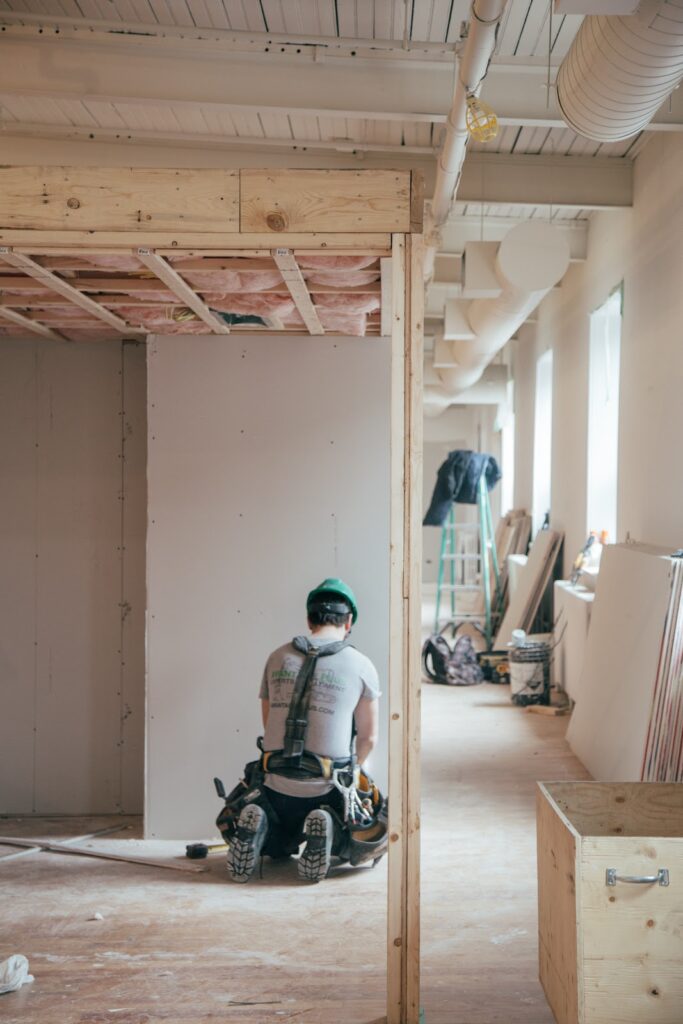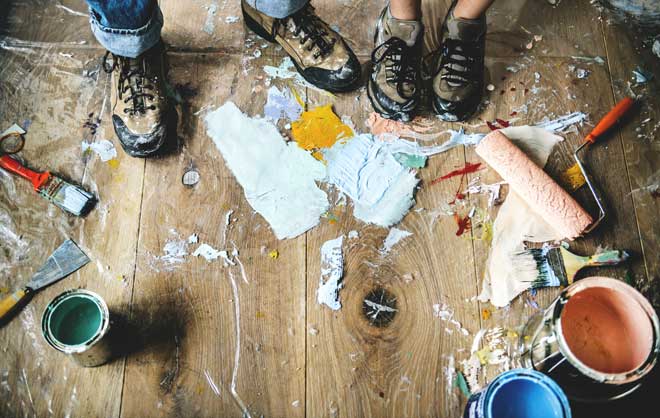Things to Negotiate when Remodeling a Kitchen
When it comes to deciding on which remodel to spend on, a kitchen remodel can often top the list. In ‘How does kitchen remodeling impact a home’s value?’ we explained how kitchen upgrades like countertops, ventilation, and cooling can increase your home’s appeal when it comes to prospective buyers. However, remodeling a kitchen can be an incredibly pricey venture. An article from House Beautiful claims that while minor tweaks start at $4,000, major expansions can cost up to more than $100,000. On average, most people’s budgets are in the realm of $22,145. If you’re trying to cut down on expenses, here are some areas where you should consider negotiating costs to make the most of your budget
Consider design fees and added markups
Getting professional help, whether from a contractor or an interior designer usually means top-notch results that accompany a hefty price tag. To prevent this, a great tip from The Post is to find a designer or company that doesn’t require you to buy from them directly. Comparing prices to see which suppliers can give you the best options will help you maximize your budget. Even though some companies don’t charge fees, excessive markups can really raise overall costs. When you look over your contract, make sure that you’re fully aware of all the additional fees that you’ll have to pay for.
Update your appliances wisely
Outdated appliances can impact the functionality of your kitchen, which can be a huge inconvenience for current homeowners or future buyers. Finding spare parts and paying for an endless array of repairs can quickly add up in the long run. Some reliable essentials that your kitchen should include a dishwasher, refrigerator/freezer, microwave, and garbage disposal. If you’re craving some extras to upgrade your cooking, it can pay off to invest in small gadgets and appliances, such as a rice cooker. As well as perfectly cooking rice and a variety of grains, rice cookers can also make tasty desserts and steamed vegetables.
Cut some corners and do it yourself
If you’re doing the shopping yourself, there are some budgeting tips you can consider. Firstly, searching for bargains takes some time and research. This includes looking for floor models with no noticeable damage, but make sure you also check their warranty policies. Shopping in the early fall can also help you find some great sales on last year’s models. Asking for volume discounts when you buy from one shop can help. Some stores also offer free services such as measuring your kitchen cabinets and figuring out your layout. Sometimes, big retailers don’t necessarily give you the best deals. If you’re in a creative mood, DIY projects can also help you cut down on costs. A kitchen chalkboard wall and backsplash can make a world of difference. Check out the link below for some more inspiration
Don’t compromise on quality where it counts
Lastly, while there are some easy fixes and tweaks that you can do yourself, investing in some higher quality items can be worth it. An article from suggests spending as much as you can afford on your cabinets. Because you’ll use them every day, it’s essential that they open and close smoothly and are made of sturdy materials. They’re also relatively difficult to replace down the line. Another area that you shouldn’t overlook is your flooring. Wood is an attractive choice, but tile is more functional when it comes to dishwasher leaks. However, hardwood is also a great choice if you’re aiming for high resale value, as well as a wood tile with very thin grout lines.

Getting Started with a Kitchen Remodel- Everything you Need to Know
Planning your Kitchen Remodel
First things first, if you’re investing in your kitchen, it should be a reflection of you and your lifestyle. Begin by thinking about how you use your kitchen, and what you’ll need and want from it on a daily basis.
Set Goals:
Before you dive into meeting with a contractor, you need to take a evaluate how you currently use your kitchen, and what you’d like to get out of it. It’s easy to leave things out, so we’ve created an easy worksheet guide to help you think about the current activities that go on in your kitchen, and how it currently stacks up to your needs.
Budgeting for a Kitchen Remodel
Setting a budget for you kitchen remodel involves more than just throwing out a random number, it requires research. You may have an idea of how much you’d like to spend, but sometimes it’s just not a viable number. Do your due diligence by finding out what’s available to you by visiting showrooms, checking out trade shows, and reading magazines. Once you’ve curated your wish list, revise it into a reality list with the price tags. We help you do this by pairing you with a designer that will help you add or delete items to meet your budget. However, keep in mind that it’s important to keep a little flexibility in your budget for unforeseen costs such as dry rot, or non compliant plumbing and electrical.
Kitchen Remodeling Costs:
One of the biggest fears while embarking on a kitchen remodel is blowing through your budget. This is why we emphasize careful planning. To help you develop a clear plan to your kitchen remodel cost and budget, we’ve created a worksheet to guide you through planning, goals, and a kitchen calculator to help you determine where your money is going to be allocated in the budget based on your needs. When you have a solid understanding, you’ll be able to provide the contractor exactly what you’re looking, and therefore they’ll be able to provide you with a project scope.
Designing your Layout
Bring beauty and functionality to your kitchen with inspiration from popular layouts, kitchen design ideas, and fixture trends. There are different styles for different needs; the gourmet cook needs appliances and counter space to work, the entertainer need warming drawers and a wine cooler, the large and busy family needs plenty of storage, etc

Small Things that Make a Big Difference in your Kitchen Remodel
A kitchen is one wide open possibility. You may think of kitchen design at its most basic: a collection of appliances and cabinets in one or another order. But where the appliances go, and how the cabinets are organized for function can mean the difference between a kitchen that really works for you, and one that causes endless frustration. Hiring a professional kitchen designer is the best way to make sure you end up with the former instead of suffering through the latter.
Outlets They are required by code, but that doesn’t mean they need to get in your way. Consider plugmould, which sits at the top of the backsplash, concealed by the cabinets. We often install it on a 45 degree angle so it’s easy to plug in.
Air switch Old school garbage disposals have their switch either on the backsplash or under the sink cabinet. This leads to messy, wet backsplashes, and wet hands on the cabinet doors, which often leads to early failure of the cabinet finish. A nifty alternative is the air switch, a counter-mounted button next to the sink that is easily cleaned and comes in the same finishes as most fixtures.
Garbage, recycling and compost
Most cabinet companies now offer a trash/recycling combo pullout for lower cabinets. This eliminates the need for a stand-alone trash can elsewhere in the kitchen. If you locate it in front of your food prep area, you can even sweep trash right into the can.
Magic corner. Yes, it is magic, and it will remind you of a transformer, but this hardware made by Hafele will work wonders for lower corner cabinets formerly relegated to being caves that swallow up little-used dishes

Does a Kitchen Renovation Increase Home Value?
The kitchen is the heart of the home. When it’s well designed it can elevate the entire look and feel of a property, both in terms of appearance and in terms of functionality. And when it’s not, it can make an entire home feel dated and inefficient—which can be a big problem if you’re thinking of selling. Because it plays such an important role, many homeowners look to the kitchen first when making home improvements. But does a kitchen renovation increase home value enough to justify its expense?
A kitchen renovation is the third most popular type of home improvement, according to the National Association of Realtor’s (NAR) 2019 Remodeling Impact Report, with general kitchen upgrades coming in at number two. According to Remodeling magazine’s 2020 Cost vs. Value report however, the return on investment for all types of kitchen renovations—including mid-range and upscale remodels—is going down. So what gives? Below, we’ll go over what you need to know in answer to the question does a kitchen renovation increase home value?, including how you can make the most of your remodeling investment.
Does a Kitchen Renovation Increase Home Value?
In a word: yes. Most realtors will tell you that kitchens sell houses, but increasing home value and getting a big return on your spend aren’t the same thing. As you make a home renovation budget and determine which efforts are worth the cost, you’ll need to evaluate whether the expense of a major kitchen remodel is efficiently offset by the increase in home value that if affords.
Turning back to Remodeling magazine’s Cost vs. Value report, here’s how various degrees of a kitchen renovation increase home value:
Minor Kitchen Remodel – Midrange
Average cost: $23,452
Average resale value: $18,206
Recouped expenses: 77.6%
Major Kitchen Remodel – Midrange
Average cost: $68,490
Average resale value: $40,127
Recouped expenses: 58.6%
Major Kitchen Remodel – Upscale
Average cost: $135,547
Average resale value: $72,993
Recouped expenses: 53.9%
Data was not provided for midrange major kitchen remodels.
You’re rarely—if ever—going to get a 100% return on a home improvement investment. For that reason, it’s important to do a careful cost benefit analysis and determine whether it’s worth spending tens of thousands of dollars (the average cost of all kitchen renovations is $25,093, or $150 a square foot, according to HomeAdvisor) to increase your home’s value.

Things To Expect During Your Kitchen Remodel
You’ve settled on a budget, made all the big decisions, you’ve found the most amazing countertops, and now it’s time for demolition. Between the huge expense of remodeling your kitchen and anticipating the finished product, it’s only natural to feel some apprehensions. Knowing what to expect can help allay your fears and prepare you for the project ahead.
The Dust.
Even with the most elaborate zipwalls installed, a fine layer of dust can still gather in areas far from the construction site. Projects like demolishing walls, talking apart cabinets and removing tile can produce inhalable particles which could pose threat to your family’s health. And while your crew has a solid strategy for containing and removing the dust from your home, it’s absolutely appropriate to do some kind of mitigation during the project.
The Noise.
From whining saws to scratching sanders, thumping nail guns and growling compressors, the noise will be incessant. If you have youngsters, find a place far from the construction area for naptime. Working from home or catching up on some light reading in rooms near the kitchen probably aren’t realistic expectations either.
The Time.
Don’t be fooled by the highlight reels you see on TV, a kitchen remodel takes time. Sure you can repaint and switch out the hardware to change the entire look in a few days, but you cannot redesign, demolish and install a fabulous new kitchen in just 48 hours. Take your time in deciding what your unique needs are during the planning and design phase. Once you know what you want, it’s time to brush up on those patience-skills. Often, measurements for countertops aren’t made until the cabinets are installed to make sure the fit is right. A kitchen is a major investment in your home, make sure you slow down and take the time to do it right.
The Highs.
Maybe it’s the removal of those hideous laminate countertops, or the installation of the carefully selected backsplash, it could even be the anticipation of making that first meal in your new kitchen – whatever it might be, it’s exciting! Allow yourself to be excited about each step of the project.

























